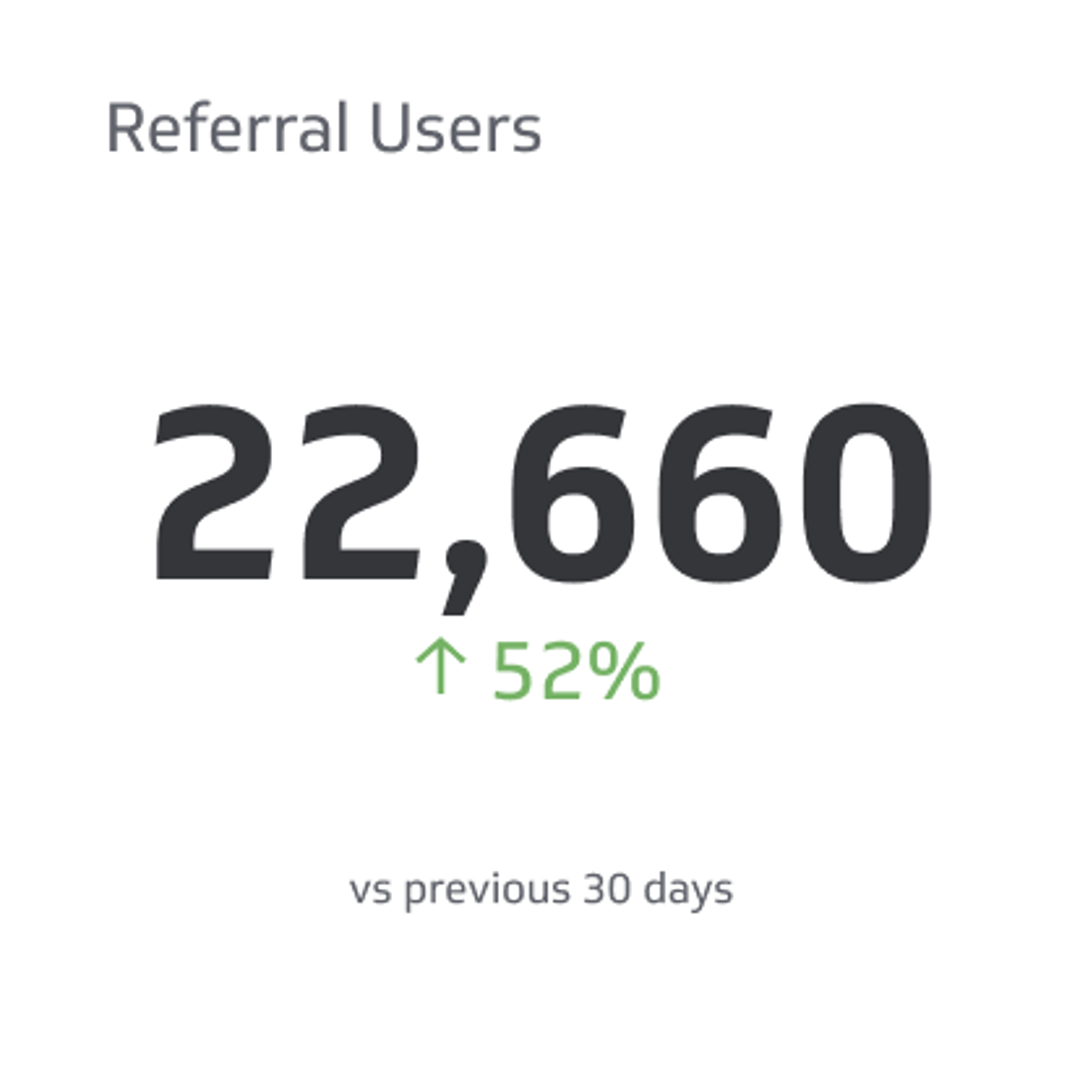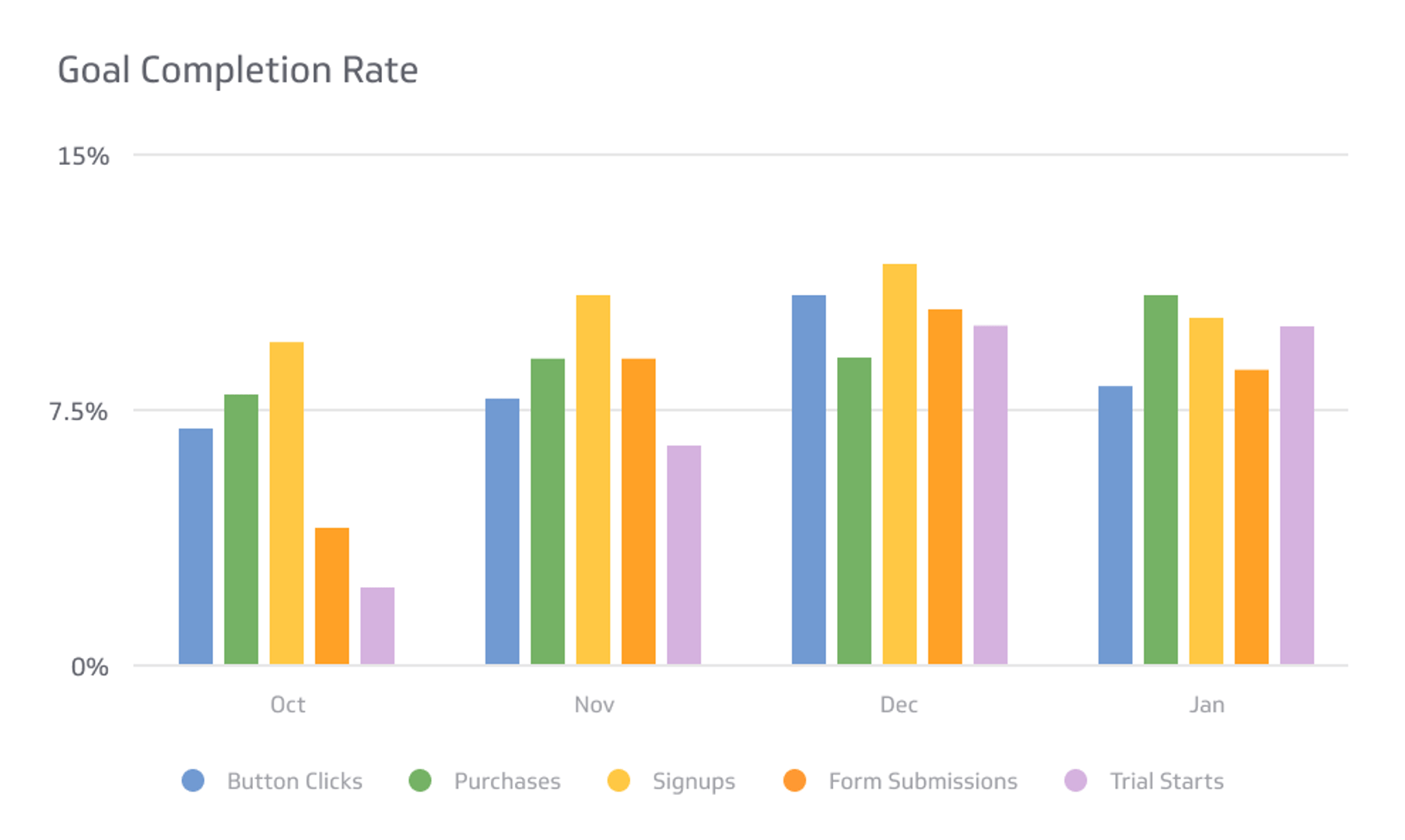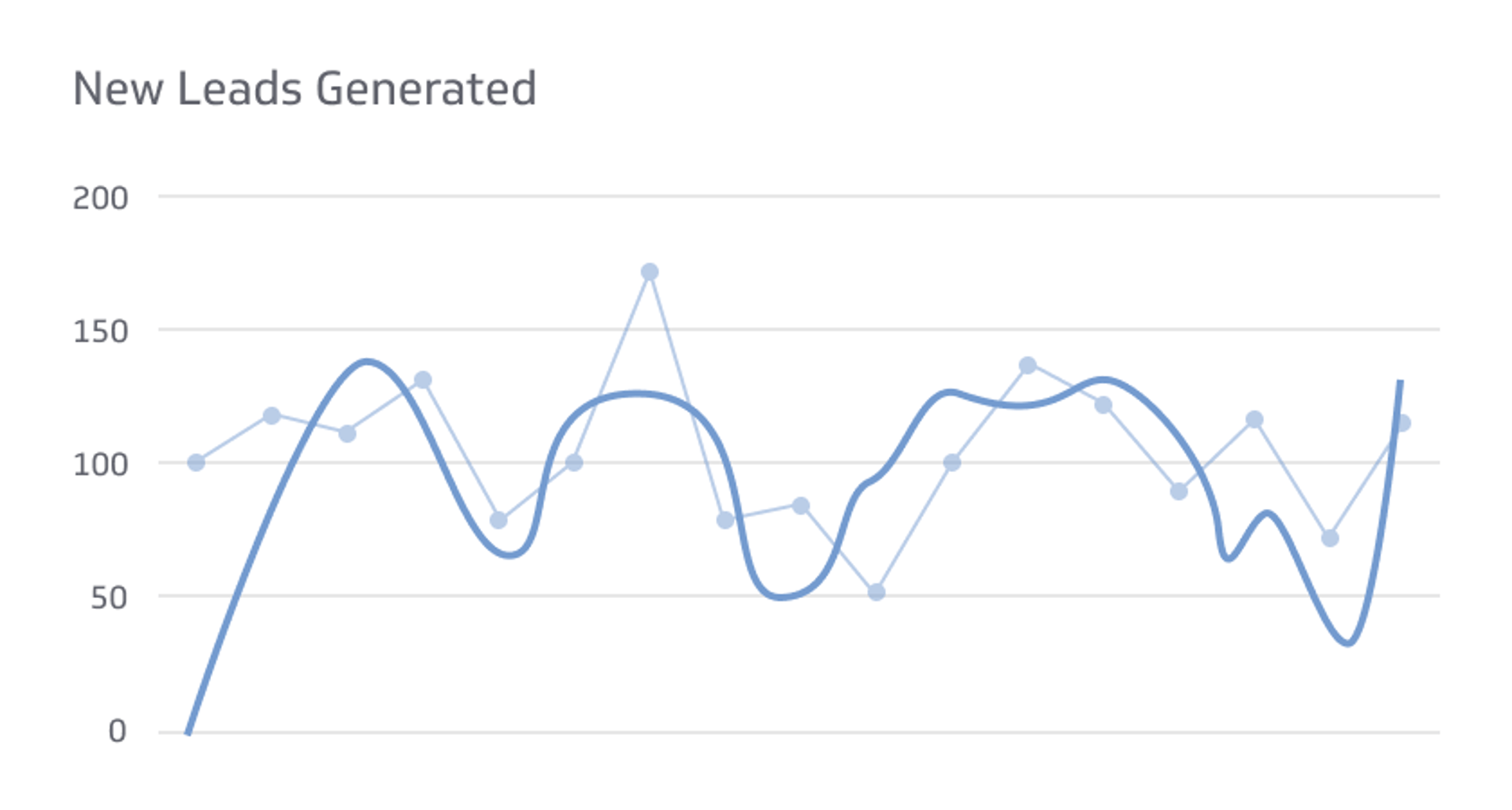Sessions Vs. Pageviews
Both sessions and pageviews are important metrics to track as they provide valuable information.
Track all your Digital Marketing KPIs in one place
Sign up for free and start making decisions for your business with confidence.

Website analytics offer a wealth of data for businesses and website owners seeking to gauge their site's performance. Among the myriad of metrics available, sessions and pageviews stand out as two of the most frequently employed.
Despite their widespread use, the distinction between these two metrics can be unclear. In this guide, we'll delve into the nuances of sessions and pageviews, highlighting their differences and emphasizing the importance of comprehending these metrics to fully harness the potential of your website's performance analysis.
What Are Sessions?
A session is a group of interactions that take place on your website within a given time frame. A session starts when a user visits your website and ends when the user closes their browser, is inactive for 30 minutes or more, or when the user manually ends the session.
During a session, the person using your site can interact with multiple pages, such as browsing different product pages, adding items to their cart, and completing a purchase. Sessions are important to track because they provide an overall picture of user engagement on your website.
How To Improve Session Duration
Here's how you can try to boost the amount of time people spend on your webpage:
Speed optimization: Slow-loading pages can discourage visitors from staying on your website, leading to higher bounce rates and fewer sessions. Optimize your website's speed by compressing images, minimizing CSS and JavaScript files, and using a Content Delivery Network (CDN) to reduce load times.
Improve navigation: A clear and intuitive navigation system can help users find the necessary information and explore your website more efficiently. Use clear labeling and organize your pages into logical categories to help them find what they're looking for quickly and easily.
Create high-quality content: High-quality, informative, and engaging content can encourage guests to stay on your website longer, read more pages, and ultimately increase the number of sessions. Ensure your content is well-written, visually appealing, and offers value to your target audience.
Social media promotion: Social media is a powerful tool for driving traffic to your site and increasing sessions. Share your website's content on social media platforms and engage with your followers to encourage them to visit your webpage.
Implement a responsive design: As more people continue to use the internet on the phones, it's best to make your site mobile-friendly for those users as well. Implement a responsive design that adjusts to their screen size and offers a seamless experience on any device.
Targeted advertising: Targeted advertising can be an impactful way to attract more visitors to your website and increase sessions. Use paid search ads or social media ads to target users who are interested in your products or services.
What Are Pageviews?
A pageview, on the other hand, is a count of how many times a page on your website has been viewed by a user. Each time they visit a page on your site, it counts as a pageview.
Pageviews are crucial to track because they provide insight into the popularity and effectiveness of individual pages on your website.
How To Increase Pageviews
Here's how you can increase the pageviews on your website:
Improve navigation: This strategy is also helpful for increasing pageviews, as it was for increased sessions. When you make it easy to find what they need, they're more likely to go from page to page if everything is clearly labeled. When your website isn't cluttered, it not only creates a better user experience, it makes them willing to stick around for a while.
Internal linking: Internal linking can guide users to related content on your website, increasing their chances of visiting more pages. Use contextual links within your content and include links to related content at the end of your pages.
Create engaging content: The number one goal when you're trying to attract visitors is to ensure you're producing valuable and engaging content. If someone comes to your page, but the content is lackluster, they will exit quickly. Determine who your target audience is, and tailor your content to pique their interest in what you have to offer.
Use multimedia content: Including multimedia content such as images, videos, and infographics can increase user engagement and keep people on your website longer, leading to more pageviews.
Implement related posts: Related posts at the end of your content can encourage users to click through to related pages on your website, increasing the number of pageviews. Use a related posts plugin or manually select relaíted content to feature at the end of your pages.
Optimize for search engines: Optimizing your website for search engines can help you rank higher in SERPs, driving more organic traffic to your site and increasing pageviews. Use keyword research to identify relevant keywords and optimize your pages accordingly.
Sessions vs. Pageviews: Why They're Important
Understanding the difference between sessions and pageviews is essential because it can give you different insights into how users interact with your website.
For example, if you have a high number of pageviews but a low number of sessions, it could indicate that users only view a few pages on your website before leaving. That means there's a problem with your site's navigation or content.
Alternatively, if you have a high number of sessions but a low number of pageviews, it shows that visitors are spending a lot of time on your website but not interacting with many pages.
It could mean your website is not optimized for user engagement or that there's a problem with the design or functionality of your site.
Tracking both sessions and pageviews is vital to gaining a complete understanding of site performance. By tracking both metrics, you can identify areas where your website is succeeding and areas where it needs improvement.
How To Track Sessions and Pageviews
There are multiple ways that you can go about tracking sessions and pageviews using various online tools. Here are some of the most popular options:
Use Google Analytics: Google Analytics is a free web analytics tool that allows you to track sessions and pageviews on your website. Simply add the Google Analytics tracking code to your website's HTML code, and Google Analytics will track and report both components.
Use a website hosting service that offers analytics: Some website hosting services, such as GoDaddy and Bluehost, offer website analytics as part of their hosting packages. Check with your hosting provider to see if this is an option.
Use a website plugin: Many website platforms, such as WordPress, offer website plugins that allow you to track sessions and pageviews. Look for plugins such as MonsterInsights for WordPress.
Once you've set up a method for tracking these metrics on your website, you can analyze the data to understand audience behavior and engagement.
Some metrics to look for when tracking sessions include the number of sessions per day, the average session duration, and the bounce rate (the percentage of users who leave after visiting only one page).
Some digital marketing metrics to look for when tracking pageviews include the total number of pageviews, the number of pageviews per user, and the average time spent on each page.
Final Thoughts
Both sessions and pageviews are significant aspects to track as they provide valuable information. However, the importance of each one depends on your specific goals and objectives.
Tracking sessions can help you understand how many unique visitors your website is attracting, how long users are staying on your website, and how frequently they return. This factor is beneficial for measuring overall website traffic and engagement.
Tracking pageviews can tell you which pages are the most popular, how engaged users are with your content, and how many pages users view per session. This component is handy for measuring the effectiveness of your content strategy and identifying opportunities to improve user engagement.
Related Metrics & KPIs



